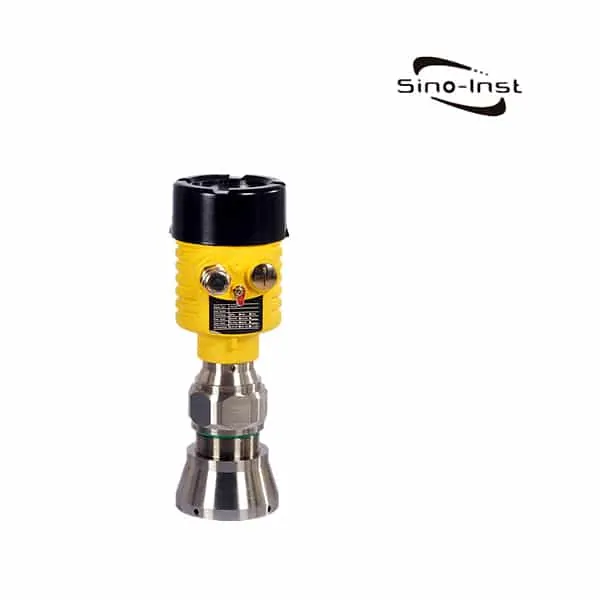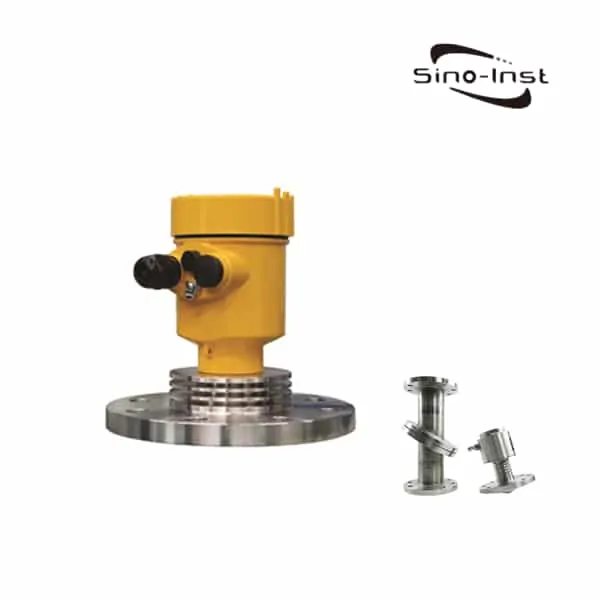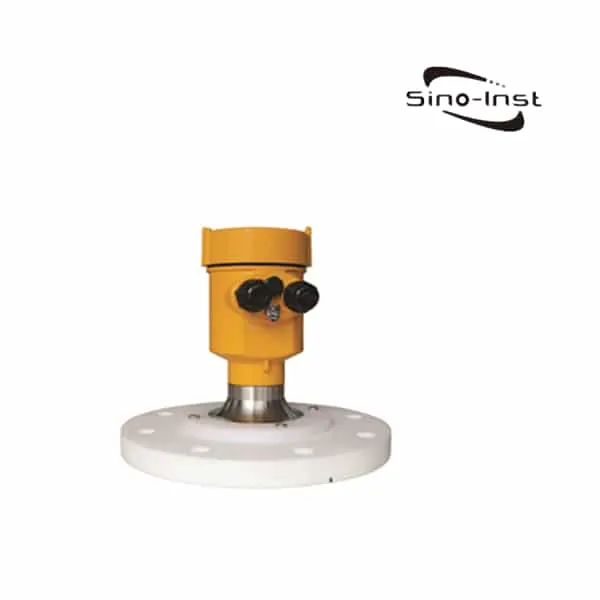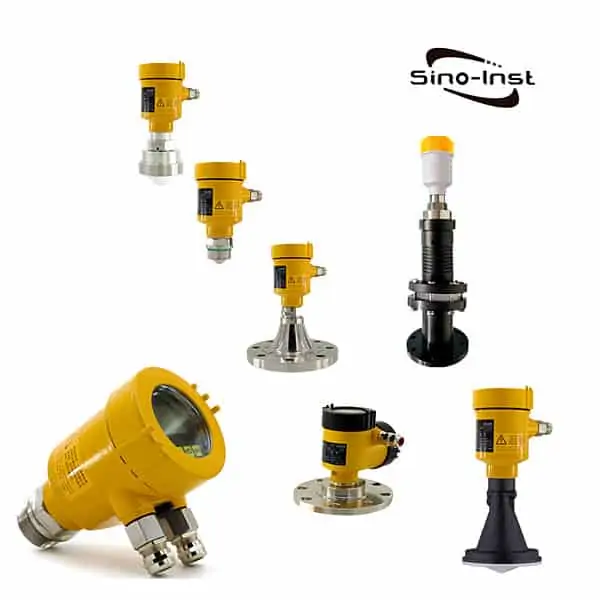The Silo/Bin level measurement and control system solves the problem of frequent dumping accidents in the powder silo of the mixing station during the feeding process. It avoids the problems of dust flying, waste of cement, and environmental pollution. It reduces the equipment damage caused by the collapse of the dust removal hood of the mixing station Other issues and prevents the safety issues of the workers present.

The importance of Silo/Bin level monitoring
In the production process of the mixing station, the material in the powder silo is replenished in time by means of pneumatic conveying. Most of the dust collectors on the top of the powder silo of the mixing station lack normal maintenance. During the replenishment of the tank body, the pressure of the powder silo is too high, causing “roof fall”. Cement overflows from the dust collector or safety valve. Or “lift the top”, the separation of the top cover of the powder silo from the body of the powder silo occurs.
The intelligent safety system of the powder silo passes through the intelligent detection equipment installed on the silo. achieve:
- Predict the amount of storage in the warehouse and control the amount of feed;
- Three-level protection to prevent the occurrence of “top falling” and “lifting top” accidents;
- Prevent the wrong storage of cement, fly ash, and mineral powder, and prevent construction quality accidents;
- Cloud platform monitoring platform, real-time monitoring of the status parameters of the powder silo;
Extended Reading: What is level transmitter working principle?
Silo/Bin material level measurement system
System Features
- Instead of “manual hammering”, the remaining amount of materials in the warehouse can be controlled at any time to provide a basis for procurement and inventory;
- The resistance rotary switch is intelligently controlled, and the signal is incorporated into the material level measurement system, which greatly extends its service life;
- Real-time alarm on the feeding surface when feeding, to prevent the occurrence of “roof fall” accidents;
- The application of product intelligent diagnosis algorithm solves the difficulties of heavy hammer level gauges in the industry that it is too faulty and difficult to maintain;
- The control system adopts a distributed network system, wireless transmission, stable and reliable, and fast wiring;
- Reserved information interface to meet the needs of remote control and ERP management system;
- Distributed control system layout, display the working status of the entire system and equipment parameters on the touch screen;
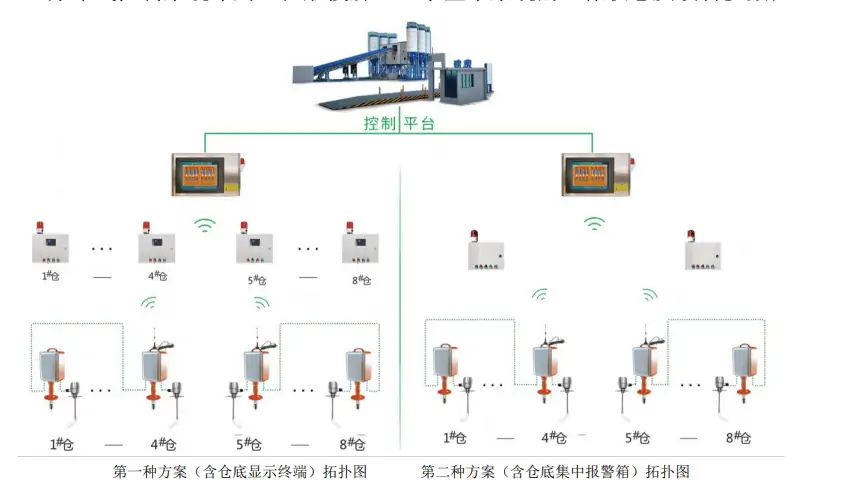
Extended reading: PID Controller Working Principle
Important components of the system
- High-altitude material level detector
Installed on the top of each silo, it is the main measuring equipment of the material level measuring system. It can more accurately monitor the amount of storage in the warehouse in real time, and has the characteristics of resistance to heavy dust and long service life.
- High-performance anti-rotation level switch
The anti-rotation material level switch is installed vertically downward to detect whether the motor is working. Through the safety feeding valve to start and stop the rotation resistance, the service life is extended to 3-5 years; with the central control touch screen alarm and the ground terminal alarm, it can effectively prevent the occurrence of “top falling” accidents.
- Central control system
It adopts a 15-inch touch LCD screen, an embedded operating system, and is equipped with the material level measurement system software independently developed by the company. The equipment adopts 485 communication interface, which has the characteristics of fast transmission rate, high signal strength, and low failure rate.
- Ground display terminal
One set is equipped at the bottom of each silo, which is used for sound and light alarm when the material level triggers the anti-rotation switch alarm (synchronized with the weighing room alarm), real-time display of material weight and percentage, promptly reminding the operator to take measures to avoid accidents.
- Safety feeding valve
The safety feeding valve is installed at the feeding port of the powder silo, which can effectively prevent the wrong silo from loading, reduce management costs, ensure the quality of concrete, and prevent production accidents.
- Remote display
Remote monitoring shows whether the current silo can be loaded, and guides the vehicle to load the corresponding silo.
Featured Silo Level Sensors
Extended reading: Magnetostrictive Hydraulic Cylinder Position Sensor
Advantages of Radar Silo Level Sensors
High frequency radar Silo Level Sensor is currently the mainstream product for measuring solid level in the world. When measuring solid material level, compared with low frequency radar, high frequency radar has the following advantages:
1) High-frequency radar level gauges (mainly 26GHz and 24GHz) have the advantages of high energy, small beam angle and high precision. However, low-frequency radars have low energy and scattered energy, so all launch angles are large and the directivity is poor. When the diameter of the horn antenna of the low-frequency pulse radar is Φ246, the beam angle is only 15°).
2) The wavelength of 26GHz radar is 11mm, and the wavelength of 6GHz radar is 50mm. When the radar measures the bulk material level, the radar wave reflection mainly comes from the diffuse reflection of the material surface. The intensity of diffuse reflection is proportional to the size of the material and inversely proportional to the wavelength. That is to say, for the same material, the shorter the wavelength is, the easier it is to be reflected, so the echo signal is better during radar measurement. The diameter of most bulk materials is far less than 50mm, which is why 26GHz radar is currently the best choice for bulk material level measurement.
3) Due to the harsh environment on site, dirt, water vapor, etc. will accumulate on the radar antenna over time. The 26GHz radar antenna is small, adding a radome can greatly improve the impact of dirt and water vapor. The 6GHz radar antenna is large, and it is very difficult to add a radome. The overall instrument is large and difficult to clean.
4) When the low-frequency radar (6GHz) measures solids, the measurement range will not exceed 30m. It cannot meet all level measurements of cement lines above 2500T/d scale. The general measurement range of high-frequency radar can reach 70 meters, or even 100 meters. It can fully meet all silos of cement production lines of all scales at present.
5) Because the high-frequency radar level gauge has good directivity and small launch angle. Strong anti-interference ability and so on. It is determined that it is very suitable for the measurement of silos with large aspect ratios. Especially such as calcium carbide furnace material level, converter silo and other material level measurement. Neither of these situations can be measured with low frequency radar.
6) Low frequency radar compared to high frequency radar. Due to its low frequency, the energy is scattered and the energy is not concentrated enough. Therefore, the ability to fight against dust is far inferior to high-frequency radar.
Extended reading: How to Choose the Right Diesel Fuel Level Sensor?
Safe feeding system for powder silo
The remote display of the weighing room shows the warehouse number and the material is allowed to be loaded. The driver holds the card to the ground display terminal and swipes the card if the warehouse allows loading. When the card number is the same as the warehouse number. Only then can the feeding valve be automatically opened.
After the card is valid, the access control baffle is automatically fully opened within 15 seconds. After swiping the card again, the access control shutter will automatically be fully closed within 15 seconds.
The powder safety feeding valve system comes with a closed door detection. Real-time detection of closed door status.
The feeding valve cannot be opened without swiping the card or reading the correct ID information
Extended Reading: Laser level transmitter working principle
After loading, the driver needs to swipe his card to close the access control. Then go to the weighing room to hand in the card, otherwise the system prompts that the access control is open. The weighing house will not weigh the vehicle.
At present, the loading port of the cement silo of most mixing plants adopts simple mechanical locking methods. In actual production, it is easy to cause the wrong material to enter the silo, and the loading is not closed and locked. The intelligent material level system for powder silo developed by our company. It has the advantages of easy installation and maintenance, accurate measurement, high safety in use, and no need to stop production during installation. It is currently the preferred solution for real-time measurement of the powder silo level on the market.
Extended reading: 5 Industrial Propane Tank Level Indicators
Solid flow meter | For bulk solids-powder-soybean-cement
In fact, in addition to monitoring the material level of the bin, we can also know the material level of Silo/Bin by monitoring the flow of solid particles or powder.

What is a solid flow meter?
The solid flow meter is suitable for the measurement of solid mass flow in a wide range of metal-enclosed pipelines from kg/h to t/h. The system is suitable for online monitoring of the flow of solids such as powder, dust, pellets, granules, etc., which are pneumatically conveyed or in free fall (1nm-20mm). Solid flow meters are also called solid powder flow meters, intelligent electrostatic powder flow meters, solid dust flow meters, coal powder flow meters, mineral powder flow meters, lime flow meters, cement flow meters, flour flow meters, petroleum coke powder flow meters.
Read more about: Solid Flow Meter Parameters
More Featured Level Measurement Solutions
FAQ
Sino-Inst offers more than 40 powder silo/silo level measurement and control systems. About 50% of them are level gauges and 50% are silo level sensors. Suitable for highest and lowest level product detection, they can be installed in flat bottom silos and hopper silos to prevent silos from overflowing or emptying.
There are various powder silo/silo level measurement and control systems for you to choose, such as free samples, paid samples.
Sino-Inst is a globally recognized powder silo/silo level measurement and control system instrumentation supplier and manufacturer, located in China.
Sino-Inst offers a wide range of high-quality silo level sensors designed for various environments at competitive prices. Helps operators accurately monitor and measure liquid level and flow in silos. A range of non-contact solutions means that the operator does not have to come into direct contact with any substance. It also means that the process is not interrupted.
Sino-Inst’s entire team is well trained, so we can ensure that each customer’s needs are met. If you need any help with your product requirements, whether it is a silo level sensor, level sensors, or other equipment, please give us a call.
Request a Quote

Wu Peng, born in 1980, is a highly respected and accomplished male engineer with extensive experience in the field of automation. With over 20 years of industry experience, Wu has made significant contributions to both academia and engineering projects.
Throughout his career, Wu Peng has participated in numerous national and international engineering projects. Some of his most notable projects include the development of an intelligent control system for oil refineries, the design of a cutting-edge distributed control system for petrochemical plants, and the optimization of control algorithms for natural gas pipelines.


